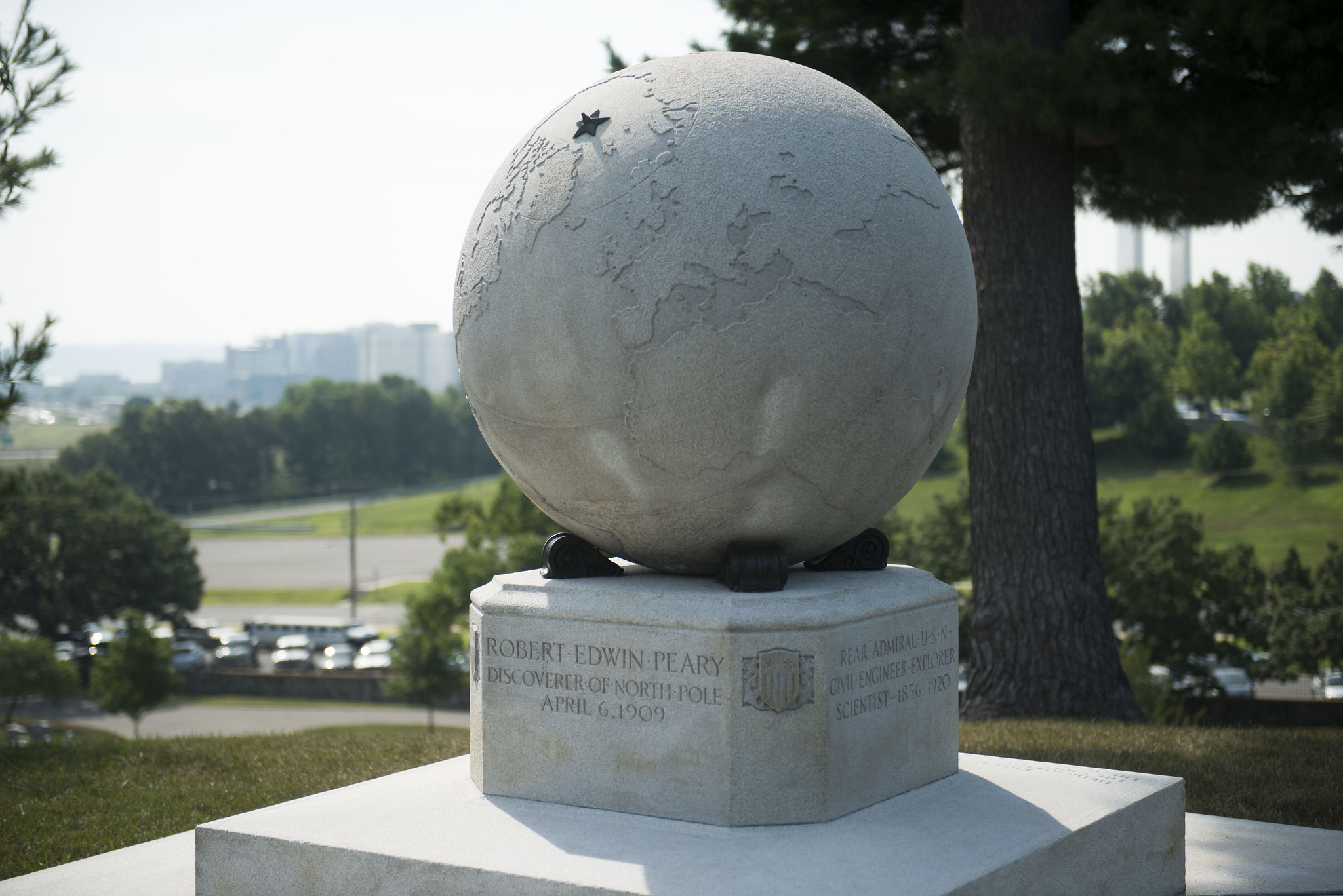Rear Admiral Robert E. Peary

On the 13th anniversary of the discovery of the North Pole, April 6, 1922, the National Geographic Society unveiled its white granite tribute to the explorer Robert Edwin Peary. The monument, with its smooth terrestrial globe, bears the Latin inscription "Inveniam Viam Aut Faciam," meaning, "I shall find a way or make one." Those words aptly describe Peary's determined quest to find the North Pole.
Born in 1856 in Cresson, Pennsylvania, Peary served in the U.S. Navy Civil Engineering Corps. While in the Navy, Peary made four trips to Greenland, his first expeditions into the Arctic region. Joining him was Matthew Henson, an African American explorer he had hired as an assistant. These exploratory journeys earned Peary fame and prepared the way for his most ambitious journey to the North Pole.
Granted a leave of absence from the Navy, Peary first attempted to reach the North Pole in 1898, but returned four years later without having reached his destination. In 1905, Peary and Henson set out once again, pushing their way northward on sledges over the icebound Arctic Ocean. In April 1906, Peary set a new "farthest north" record, which the National Geographic Society recognized by awarding him its highest honor, the Hubbard Medal. But due to a dangerous shortage of supplies, he again turned back before reaching the North Pole.
In February 1909, Peary and six sledge teams left Cape Columbia, on the northern coast of Canada's Ellesmere Island. Peary, Henson and four Inuit companions comprised one team, and together they inched their way northward until, on April 6, they stood where no human had ever stood before — the North Pole. In 1911, the U.S. Congress officially recognized Peary's achievement, and in March of that year, the Navy promoted him to the rank of rear admiral.
Robert Peary died on February 20, 1920 in Washington, D.C. He was buried with full military honors at Arlington National Cemetery three days later. In 1988, Matthew Henson was reinterred at Arlington — a long-overdue recognition of his pivotal role in Peary's Arctic expeditions.
As plans proceeded for erecting a monument to Robert Peary, the National Commission of Fine Arts initiated a study for a more accessible gravesite. The Commission considered the original gravesite too difficult to develop because of its location on the side of a hill, in a cramped section of the cemetery. With the support of the Peary family and the National Geographic Society, the Commission proposed an alternate site on the far western side of the cemetery. Peary's remains were subsequently disinterred from Section 3 and reinterred in Section 8. On April 6, 1922, in a ceremony attended by President Warren Harding and other dignitaries, the National Geographic Society unveiled a monument at Peary's gravesite, featuring a beneath a large, white granite globe. A bronze star on the globe, pointing north, marks the North Pole.